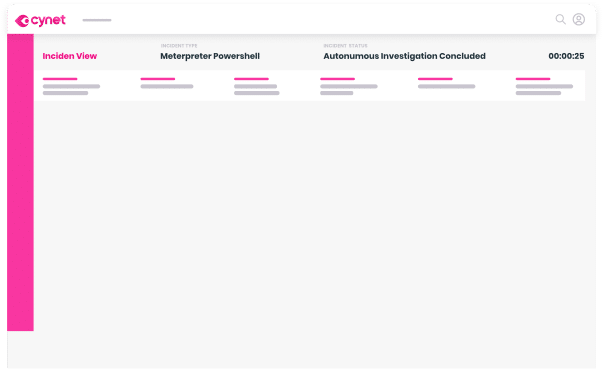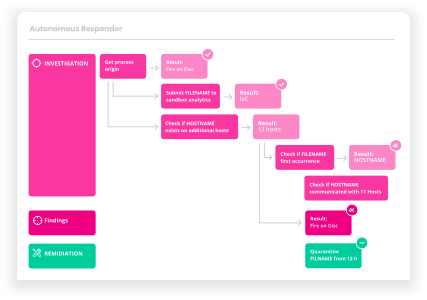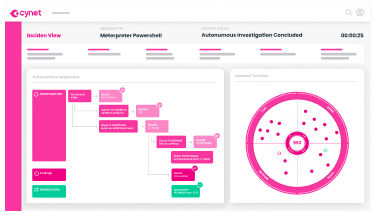Search results for:
The Computer Security Incident Response Team (CSIRT) is a team charged with incident response, handling all security incidents affecting an organization in a timely and effective manner. They are responsible for protecting the confidentiality, integrity and availability (CIA) of business assets, mainly computer systems and networks, as well as the organization’s valuable data.
Some large organizations maintain an in-house, dedicated CSIRT team. But many organizations cannot sustain the cost of a full security operations center (SOC), and so they outsource the CSIRT to external service providers (MSSPs). In smaller organizations, hybrid teams are often assembled to respond to security incidents, where only some of the members are dedicated security staff and others work in IT or other departments.
Need an incident response provider?
Cynet is a trusted partner that analyzes network and endpoint data, raises alerts, and protects against a wide range of known and zero-day threats. Cynet provides CyOps, an outsourced incident response team on call 24/7/365 to respond to critical incidents quickly and effectively. Cynet can deploy its powerful endpoint detection and response (EDR) system across thousands of endpoints in up to two hours to effectively mitigate threats across an enterprise.
Learn more about Cynet incident response services.
At the heart of the CSIRT is incident management. The key to effective incident management is to respond quickly to incidents, with the goal of minimizing damage caused by attackers, eradicating the threat, and rapidly restoring operational systems.
The CSIRT takes responsibility for the following incident management activities:
Related content: Read our guide to incident response team.
Apart from overall responsibility for security policies and the day-to-day work of incident management, the CSIRT members have additional important responsibilities:
A distributed CSIRT unit consists of several independent teams collaborating and sharing incident response responsibilities. It is typically managed by a coordinating team that distributes responsibilities and resources according to the unique needs of each project.
A coordinating CSIRT manages other, typically subordinate CSIRT units, coordinating incident response activities, workflows, and information flow among distributed teams. Typically, a coordinating CSIRT does not provide independent incident response services. Rather, it ensures resources and activities are effectively distributed between disparate teams.
A hybrid CSIRT consists of a centralized full-time unit and distributed units employing subject matter experts (SMEs). Typically, SMEs participate in incident response activities ad-hoc—as needed during specific events. This model employs a central CSIRT unit to detect a potential event and analyze it to determine the appropriate response. Next, the relevant distributed CSIRT experts are asked to assist in incident response activities.
A CSIRT/SOC Hybrid model puts the security operations center (SOC) responsible for receiving all security alerts, reports, and alarms that indicate potential incidents. The CSIRT is activated only if the SOC requires help with additional analysis. The SOC performs incident detection and passes incidents to the CSIRT, acting as a front end for the CSIRT.
An outsourced CSIRT helps organizations that lack the staff or resources required to build an in-house incident response team. This model typically supplements an internal team with external contractors or outsources CSIRT services and tasks on-demand, like digital forensics.
Related content: Read our guide to the security operations center (SOC).
Use these best practices to build an effective CSIRT team.
Ideally, a CSIRT team should provide 24/7 incident response support. Realistically, many organizations don’t have enough security experts to achieve this level of coverage. The solution is to develop a shift system to ensure consistent coverage, or at least have individuals on call in case of a severe incident.
Cross-training can be very helpful—by ensuring all members of the team are trained in multiple security disciplines, the same individuals can serve in different roles at different times, depending on their availability.
Another problem is the lack of in-house expertise. An organization may have multiple security professionals, but naturally they will not be skilled in responding to all types of incidents, all the necessary tools or techniques. These knowledge gaps can be a challenge when unique or rare events occur.
You can address this by modeling your threats, identifying important threats that might be challenging for your team to address, and augmenting their skills by training, consulting, or outsourcing.
Security teams, tools, and responses require large budgets to deploy and maintain over time. In addition, when a security team is highly effective, and there are no major security incidents, they might appear to be an unjustified expense to executives and shareholders.
In order to get the resources a CSIRT team needs to operate effectively, it must be supported by the executive team. An executive advocate supporting the CSIRT can help other executives understand the importance of security, and ensure that budget cuts or restructuring do not jeopardize the organization’s incident response capabilities.
One of the most important steps in an incident response plan is to evaluate response after every incident and improve the process. For CSIRT to be effective, it must have effective policies, procedures, and technologies, which are regularly updated to reflect current and evolving threats.
Allow time for the team to review activities, structure, and skill levels on a regular basis. If changes can be made to improve the process, leadership should support those changes. Cybersecurity is highly dynamic, and the best way to ensure the overall effectiveness of CSIRT and security is to continuously evolve CSIRT capabilities.
Cynet provides a security platform that can be deployed in minutes across hundreds to thousands of endpoints to scan, identify and remediate threats. CyOps, Cynet’s Cyber SWAT team, is on call 24/7/365, allowing enterprises of all sizes to get access to the same expert security staff that protect the largest enterprises.
Cynet’s CyOps provides always-on incident response services, threat hunting, forensic investigations for breaches, and malware analysis to automatically prevent threats like malware, fileless attacks, Macros and LOLBins.
Contact Cynet for immediate help
For emergency assistance from Cynet’s security experts, call them at US 1-(347)-474-0048, International +44-203-290-9051, or complete the form below.



Let’s get started
Ready to extend visibility, threat detection and response?

Prefer a one-on-one demo? Click here
By clicking next I consent to the use of my personal data by Cynet in accordance with Cynet's Privacy Policy and by its partners